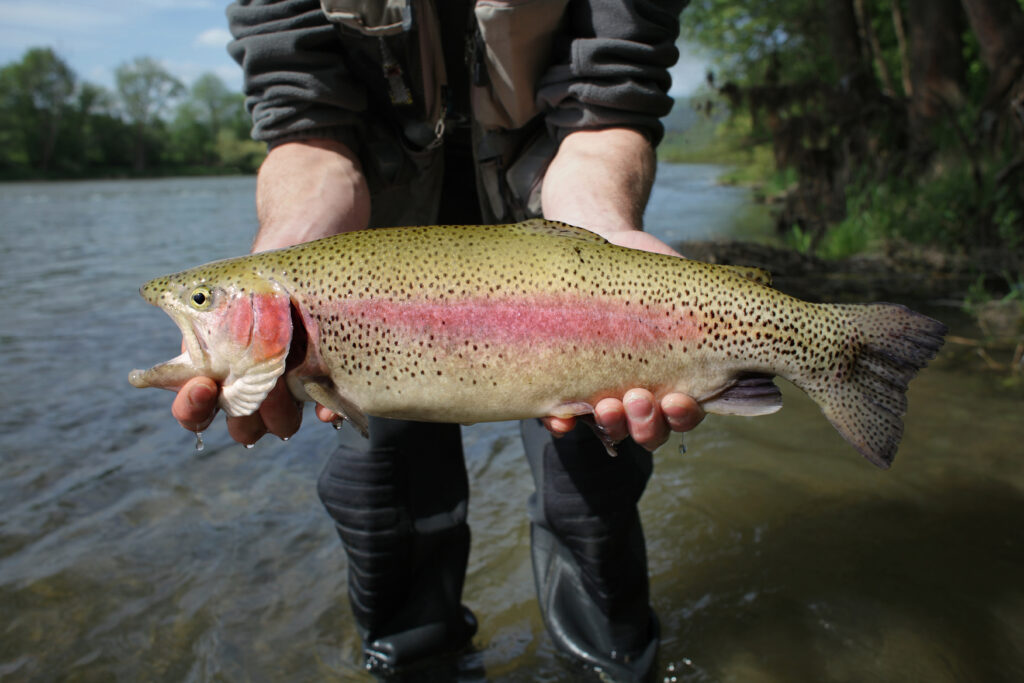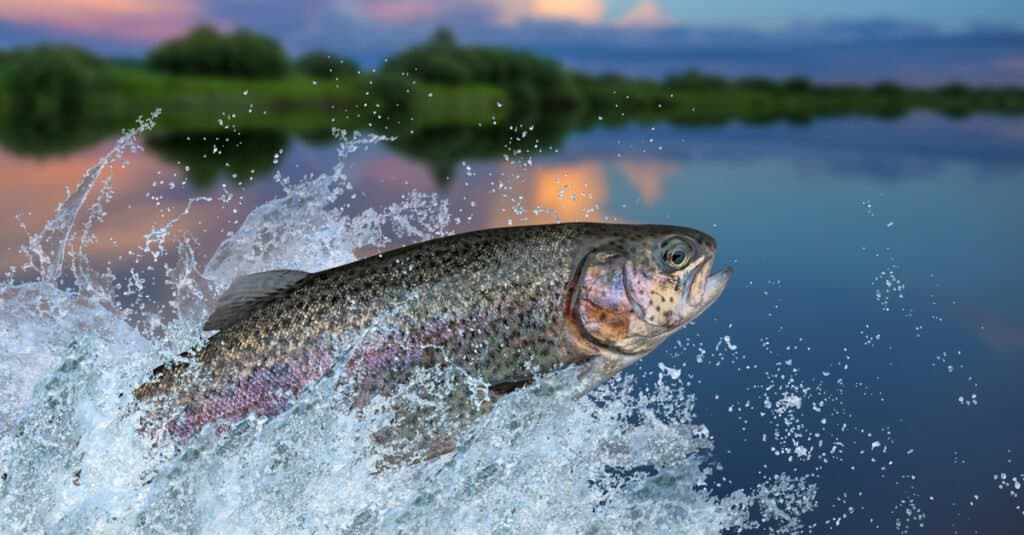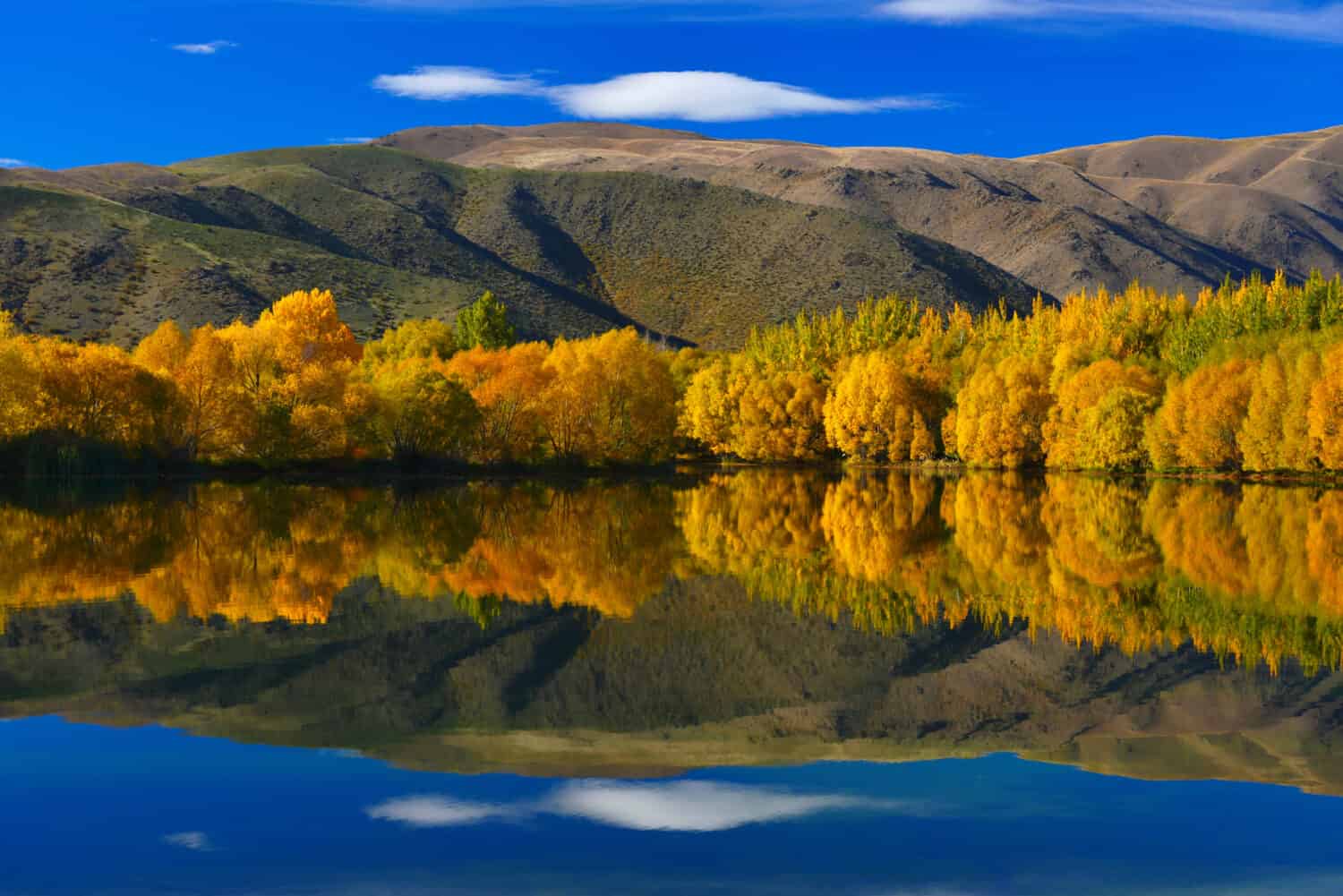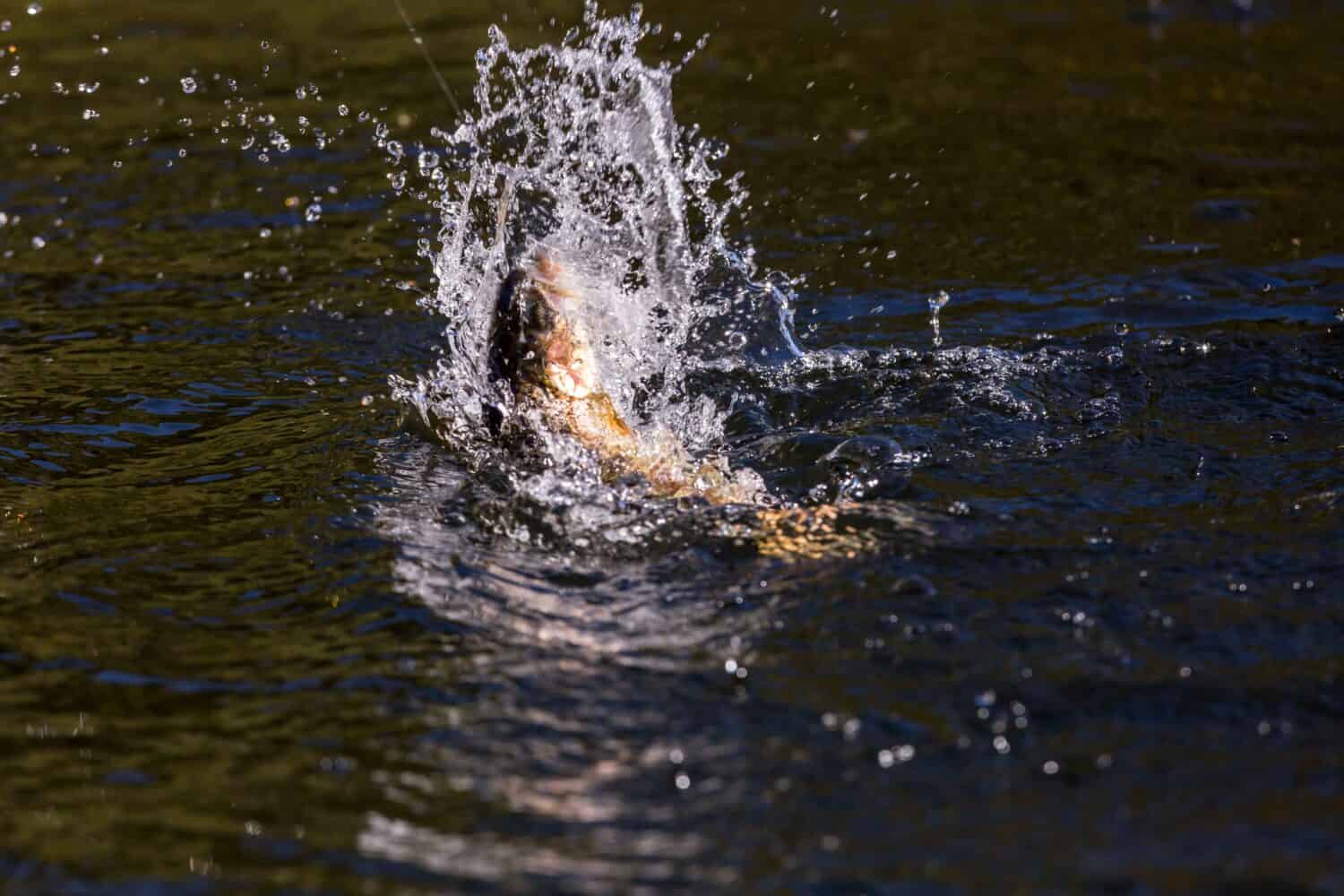Rainbow trout are part of the salmon family and native to the northern Pacific Ocean, from the Americas to Russia. However, today, they occur in several countries, including the United Kingdom. Furthermore, these fish are widely farmed for lake and river stock as sport and table fish. Rainbow trout derive their names from their distinct pink or red lateral line. As a result, they are often referred to as the “red band trout,” but the genus that fits this description only occurs in the Great Basins of the western United States, Columbia, or MacLeod.
Travelers have introduced rainbow trout to many locations all over the world, and they will often successfully establish self-sustaining wild populations. For example, they are not native to South Carolina, but for well over a century, they have been a popular game fish in the state. But what is the largest rainbow trout ever caught in South Carolina?

Scott Coggins is the angler that holds the record for the largest rainbow trout ever caught in South Carolina. He caught this massive rainbow trout in Lake Jocassee in 1993, weighing a whopping 11.5 pounds! Lake Jocassee has a large number of rainbow and brown trout, which draws in anglers from South and North Carolina. Some days are easier to catch trout than others, but seasoned anglers figured out when and how to catch trophy-sized trout in this lake. For example, Lake Jocassee is 300 feet deep, but the best place to catch trout is between 30 to 50 feet deep.
Another reason why anglers consistently catch large trout on this lake is that they use a GPS to save their location at the time of the catch. Once the fish takes the bait, the angler pushes a button on the GPS, and it instantly records the location. Additionally, many anglers use live bait or lures to attract rainbow trout.

The largest rainbow trout caught in South Carolina was at Lake Jocassee.
©digidreamgrafix/Shutterstock.com
Average Size and Habitat of Rainbow Trout
On average, rainbow trout measure between 20 to 30 inches long and weigh around 2 to 16 pounds. These fish inhabit clear and cold water (nothing higher than 68 degrees Fahrenheit) in reservoirs, lakes, and rivers. They prefer tailraces of large impoundments or sometimes the deep waters of reservoirs. However, rainbow trout will inhabit fast-moving waters in regular mountain streams, like the head of a pool area.
The Largest Rainbow Trout Ever Caught
Sean Konrad holds the record for the largest rainbow trout ever caught. His massive catch weighed a whopping 48 pounds, which he caught using a Rapala in Lake Diefenbaker, Saskatchewan, Canada. Lake Diefenbaker is notorious for its huge trout. In fact, this lake is also home to the last world record rainbow trout. As a strange twist, the previous record holder was Sean Konrad’s twin brother, Adam Konrad. The twins aren’t new to trophy-fishing; they have several notable catches under their belts but won’t divulge their secret of success. These twins even go to the extent of fishing at night so the other fisherman won’t see what they are doing.
On the night that Sean caught this record-breaking fish, his brother was teasing him about not catching a rainbow trout over 40 pounds yet. Little did they know what was about to happen. Sean hooked the massive trout from a boat casting a Rapala and spinning rod. When they initially weighed the fish on the scales, it was 40 pounds. However, when they weighed it on an IGFA scale, it weighed a record-breaking 48 pounds. Since the average size of a rainbow trout is 16 pounds, you can only imagine this fish’s size. Besides its heavy weight, it measured 42 inches long and had a circumference of 32 inches.

Anglers travel all over North America searching for large rainbow trout to catch.
©pictoplay/Shutterstock.com
Why Are the Trout in Lake Diefenbaker So Big?
Most trout over 20 pounds are genetically engineered to be triploid fish, meaning they don’t spawn. These rainbow trout are consistently released into Lake Diefenbaker, which is why it is so notorious for trophy-sized fish. Because these large trout do not spawn, they use that energy to grow. As a result, all they do is eat. Luckily Lake Diefenbaker has an abundance of food for rainbow trout, including:
- Insects
- Crustaceans
- Mollusks
- Fish
- Fish eggs
The average lifespan for rainbow trout in this lake is around 20 years, and they never stop growing, so there is still plenty of time to catch another world record-breaker.

Rainbow trout are commonly found throughout the United States.
©FedBul/Shutterstock.com
Previous Records for Rainbow Trout
While these records are not as shocking as a 48-pounder, they do deserve a mention.
American Falls Reservoir, Idaho
Brett Jones was the lucky angler that caught a 31.25-inch long rainbow trout in the American Falls Reservoir, Idaho. In fact, the American Falls Reservoir is notorious for its record-breaking trophy trout. The massive rainbow trout that Jones caught was released and will continue to grow.
Ruhr River, Kreuzau, Germany
The largest rainbow trout ever caught on a fly rod and qualified according to the IGFA rules weighed 30.15 pounds on a 12-pound tippet. Dietmar Jeschke caught this massive trout on the Ruhr River in Germany on July 27th, 1999.
Lake Ruataniwha, New Zealand
New Zealand is a fly-fishing paradise and boasts a large population of rainbow and brown trout. Many anglers dream of trout fishing in New Zealand, and this dream came true for an Austrian named Frank Bluch. He went fly fishing on Lake Ruataniwh on November 6th, 2019 and caught a world-record rainbow trout on the fly for a 4-pound class tippet. The trout weighed a startling 29.5 pounds, and Frank caught it on a Beadhead Super Flash Zonker. Furthermore, he was able to get the trout to the bank in 10 minutes, which is pretty impressive for a fly rod.

Lake Ruataniwha is an angler’s dream due to the large population of rainbow trout.
©Mitchy Kagawa/Shutterstock.com
Ohau River, Twizel, New Zealand
Another record for New Zealand is the all-tackle length record for rainbow trout. Mark Armistead caught this huge fish in the Ohau River. It measured 37 inches long.
Jurassic Lake, Argentina
Anglers from all over the globe fly to Jurassic Lake because it is notorious for world-record rainbow trout. In fact, this lake is responsible for a few world records. For example, its most notable achievement is the All-Tackle Lenghty Fly World Record. This rainbow trout measured an impressive 30.7 inches and was caught by James Schmid on December 20th, 2021.
Tekapo Canal, New Zealand
Some of the largest rainbow trout in New Zealand occur in the Tekapo Canal, New Zealand. Its waters are home to three sets of world records, all caught by the same angler in one day! These records belong to Emily Allum, who smashed the women’s 8, 12, and 16-pound conventional world records for catching:
- 29.5-pound rainbow trout
- 13.03-pound rainbow trout
- 9-pound rainbow trout
She caught all three on July 28th, 2019, which is extremely rare. It must have been her lucky day, one she will likely never have again.

On average, rainbow trout measure between 20 to 30 inches long.
©Ryan Janssens/Shutterstock.com
How Do You Catch Large Rainbow Trout?
If you want to snag a large rainbow trout, you first need to think about what these massive fish eat. For example, large rainbow trout tend to prefer big baits. While you may get lucky during a huge hatch, like in early to late May during the mayfly, when they make themselves known. But, mostly, all they want is a big meal. Furthermore, when you first start, use a big fly, like a Rapala or streamer. Additionally, these large fish are intelligent and tend to feed at night instead of during the day when they hide. So, it’s best to fish during the evening.
The photo featured at the top of this post is © iStock.com/Max2611
Thank you for reading! Have some feedback for us? Contact the AZ Animals editorial team.






